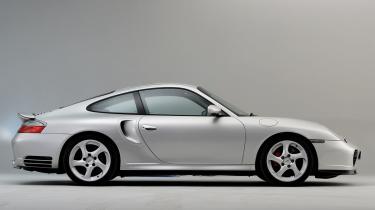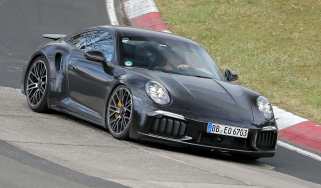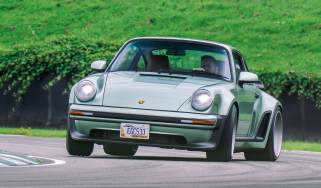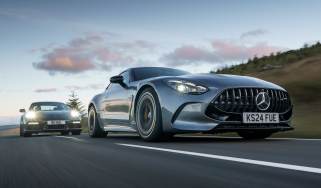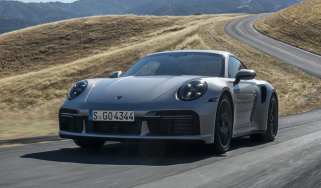Porsche 996 Turbo buying advice - Porsche 996 Turbo buying checkpoints
What to look out for when buying a Porsche 996 Turbo
These cars are generally owned by Porsche enthusiasts and so dealer servicing is the norm: most cars will have a full set of service stamps, so there is no need to risk one without.
A few cars will have seen a fair bit of track action, which is no bad thing as the car is well up to the job, although clutch and suspension wear will be exaggerated. But check for under-floor damage from aggressive rumble strips and gravel traps – dents and deep scratches will result in corrosion quite quickly. By comparison, cars that have been little used may suffer from seized electrical devices and rusty brake discs so may need more attention.
Porsche 996 Turbo engine
The Turbo engine is practically bulletproof. The only issues are occasional electrical gremlins, worn alternator/starter, and the front- mounted rads can sometimes leak. You may see a small puff of smoke when starting, which is fine, but any smoke when accelerating is bad news; oil consumption can be up to 3000 miles per litre so check the dipstick regularly. There was a tune update introduced in October 2001 for early cars which made a slight improvement to throttle response so check for the X51 stamp in the handbook on pre-2002 cars.
Transmission
The 4wd system can be noisy – you may hear it drone or whine at speed, but this is not usually a problem. Also gaskets have been known to leak, and although the gaskets themselves are cheap there is a high labour cost to change them.
Body
Check bumpers for tell-tale small creases which can hide damage underneath. The tail spoiler has a small wing that rises above 70mph – this can fail and the two rams leak oil so check carefully.
Wheels and tyres
As with most high performance cars, the 996 runs a fair amount of camber at the back which can wear the inside edge of the tyres if the car is always driven gently; low-speed town driving can wear the edges of the front tyres too as they camber over when cornering. Kerbing low-profile tyres can damage the sidewalls inside, so it’s worth budgeting for new tyres. The type of tyre can dramatically affect the car’s handling. For example, Michelin Pilot Sports work really well in the wet and equally well in the dry, but backing off when turning into a corner can bring the back end round in the traditional 911 manner. Changing to Pilot Sport Cups, the choice tyre for the Porsche Cup races, rear grip is increased even more than on the front with the result that the lift-off oversteer is virtually eliminated. Obviously you can’t have everything and wet grip is more ‘exciting’.
Suspension
Bushes are bonded to the suspension links so can be pricey to replace; it’s worth checking for wear before handing over your hard-earned.
Check the car drives straight on a smooth, level road; a tendency to pull to one side or a vibration may indicate the suspension is out of alignment.
Recalls
Check the service book has the stamps for the five recalls: replace fuel pump wiring harness and coolant line spring clamp band; fit anti-chafing sheath to engine compartment fuel line; strengthen wiring harness in area of oil filter, and secure hydraulic clutch line with extra bracket.
Find used Porsche 996's for sale on the Classic and Performance Car site here.
Specifications
| Engine | 3600cc, flat 6-cyl, twin turbo |
| Max power | 420bhp @ 6000 rpm (450bhp for S) |
| Max torque | 413lb ft @ 4600rpm (457lb ft for S) |
| Transmission | Six-speed manual (Tiptronic option), four-wheel drive |
| Tyres | 225/40 ZR18 front, 295/30 ZR18 rear |
| Weight (kerb) | 1540kg |
| Power to weight | 272bhp per ton (296 for Turbo S) |
| 0-60mph | 4.1sec (Turbo) |
| Top speed | 189mph (claimed) |
| Price new | £86,000 |
